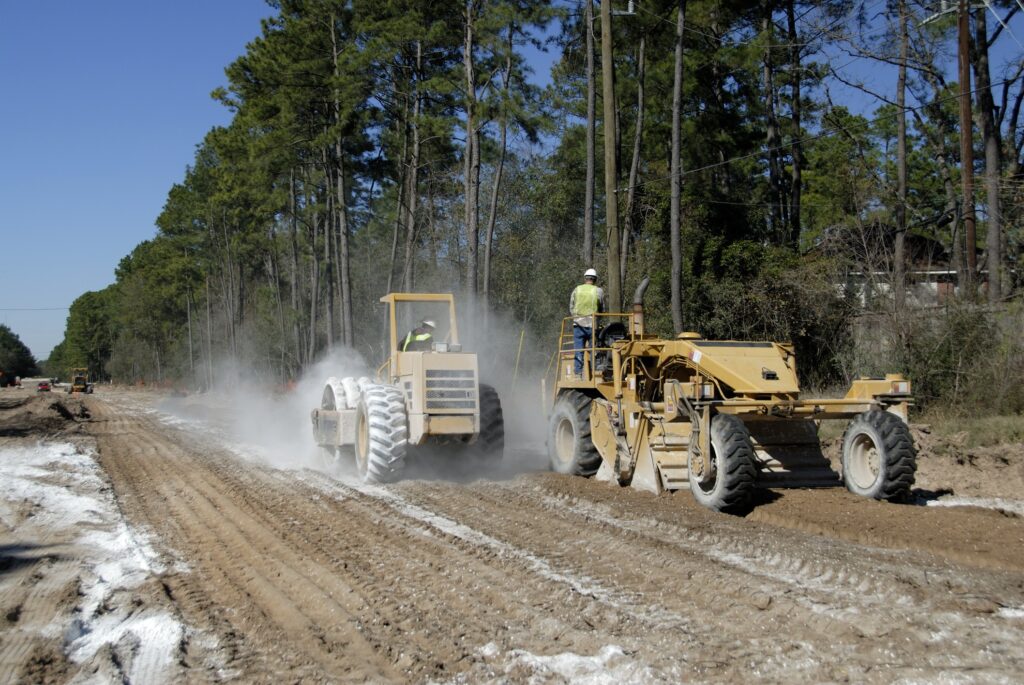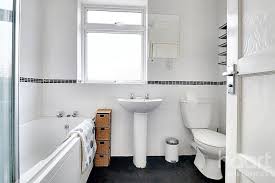Ground stabilization is the process of improving the load-bearing capacity and durability of soil beneath a property to make it suitable for construction and long-term structural stability. It is a crucial component of site preparation, especially in areas prone to soil movement, erosion, or subsidence. The process is designed to transform weak, shifting, or waterlogged soil into a solid, stable foundation. Ground stabilization also aids in managing water flow around a site, reducing the risk of flooding and foundation displacement.
Modern stabilization techniques are engineered to match specific soil conditions, structural requirements, and environmental regulations. This article explores the range of stabilization methods, compares their effectiveness and use cases, and outlines key decision factors to consider before starting a project. The goal is to help property owners, developers, and site engineers understand how to make informed, effective choices.
Types of Ground Stabilization Methods
Stabilization methods are generally grouped into mechanical, chemical, and biological categories. Each offers unique benefits and limitations, depending on the specific soil profile, project scale, and environmental constraints.
Mechanical Stabilization
Mechanical stabilization enhances soil density and cohesion through physical means. Common methods include:
- Compaction: Reducing air voids using rollers or compactors
- Geotextiles and Geogrids: Reinforcing soil layers with synthetic materials to distribute loads and limit displacement
- Soil Replacement: Removing unsuitable soil and replacing it with compacted granular material
Mechanical methods are widely used in road construction, parking lots, and shallow foundations. They are typically quicker to implement and do not introduce chemical agents into the environment.
Chemical Stabilization
This category includes techniques that chemically alter the soil’s properties to enhance strength, reduce plasticity, and increase durability. Common additives include:
- Lime: Effective for high-clay content soils, reducing swelling potential
- Cement: Increases soil strength and stiffness
- Fly Ash: A by-product of coal combustion used to improve soil workability and compressive strength
- Bitumen: Applied in asphalt-bound surfaces for water resistance
Chemical stabilization is ideal for subgrade improvements, high-load areas, and long-term infrastructure projects. It often requires curing time but provides superior resistance to weathering and deformation.
Biological Stabilization
Biological methods use natural processes or materials to stabilize soil. Techniques include:
- Vegetation: Plant roots bind soil particles, reduce erosion, and improve moisture regulation
- Microbial-Induced Calcite Precipitation (MICP): Introduces bacteria that produce calcium carbonate, binding soil particles together
- Mycorrhizal Fungi: Enhances plant-soil interactions for better soil cohesion
These eco-friendly approaches are suitable for erosion-prone slopes, stream banks, and environmentally protected zones.
Comparison Table of Ground Stabilization Methods
| Method | Suitable Soil Type | Application Area | Key Benefits | Typical Lifespan |
| Mechanical Compaction | Granular | Roadbeds, shallow foundations | Fast setup, minimal materials | 10-30 years |
| Cement Stabilization | Clayey, silty | Industrial foundations | High strength, long lifespan | 30+ years |
| Lime Stabilization | Clay-rich | Expansive soils | Reduces plasticity, improves workability | 20-40 years |
| Fly Ash Blending | Silts, clays | Pavements, embankments | Low-cost, uses waste materials | 15-30 years |
| MICP (Bio-Stabilization) | Sands, loams | Erosion control, slopes | Low environmental impact | 10-20 years |
| Geotextile Reinforcement | Mixed/granular soils | Roadways, retaining walls | Increases tensile strength | 20+ years |
Ground Stabilization Process Explained
Step 1 Site Assessment
Before any stabilization method is selected, an in-depth geotechnical investigation is required. This includes:
- Soil classification (sand, silt, clay, organic content)
- Moisture content and permeability testing
- Load-bearing capacity evaluation
- Groundwater table analysis
- Environmental and climatic impact assessment
Step 2 Selection of Stabilization Method
Based on data collected from the site assessment, engineers evaluate the most suitable stabilization method. Considerations include:
- Soil reactivity and expansion potential
- Desired load capacity and structure type
- Climate resilience (freeze-thaw cycles, moisture retention)
- Regulatory guidelines and environmental sensitivity
- Availability and sustainability of materials
Hybrid solutions combining mechanical and chemical techniques may be used for challenging sites.
Step 3 Material Preparation
Once a method is selected, materials must be tested and prepared under controlled conditions:
- Stabilizing agents are delivered and stored in climate-controlled environments
- Soil moisture levels are adjusted to ensure optimal binding and compaction
- Quality control is conducted on additives to verify purity and efficacy
Step 4 Application and Compaction
The chosen method is implemented using specialized equipment:
- Rotary tillers, spreaders, and mixers integrate stabilizing materials into soil
- Rollers or vibratory compactors compress the soil to desired density
- Multiple layers may be treated to ensure uniformity from surface to required depth
Bonus Tip: Always monitor compaction levels in real-time using nuclear density gauges or dynamic cone penetrometers.
Step 5 Curing and Final Testing
After stabilization is complete, the site must cure to reach maximum strength:
- Typical curing times range from 7 to 28 days depending on method and weather
- UCS (unconfined compressive strength) tests and permeability tests confirm compliance
- Final site inspection ensures consistency and long-term durability
Technical Specifications Table
| Parameter | Range / Value |
| Optimal Soil Moisture Content | 8% – 20% (method-dependent) |
| Depth of Treatment | 0.3m – 2.5m typical |
| Compaction Standard | 95% – 98% Modified Proctor Density |
| Curing Time | 7 – 28 days |
| Unconfined Compressive Strength (UCS) | 0.5 – 2.5 MPa for treated soil |
| Permeability (Post-Treatment) | < 10^-6 cm/sec for most chemical methods |
Market Data Snapshot
- According to Allied Market Research, the global soil stabilization market was valued at $21.5 billion in 2022 and is projected to reach $35.7 billion by 2032, growing at a CAGR of 5.2%.
- North America and Asia-Pacific regions lead the demand due to extensive roadway development and land reclamation projects.
- Urbanization, climate adaptation efforts, and disaster mitigation programs are driving adoption of both traditional and green stabilization solutions.
Things to Consider Before Making a Decision
- Soil Composition: Accurate identification of soil type is essential. Laboratory testing may uncover hidden variables like sulfates or organics.
- Climate and Groundwater Conditions: High rainfall or seasonal freeze-thaw cycles can challenge some methods.
- Project Duration and Lead Time: Chemical stabilization requires curing; mechanical methods are faster but may be less durable.
- Budget Constraints: Initial savings on materials can result in long-term maintenance costs if methods aren’t well matched.
- Environmental Impact: Regulations may restrict the use of certain additives; bio-stabilization or geotextiles may be better alternatives.
- Access to Equipment and Expertise: Not all methods are feasible in remote or logistically limited areas.
Bonus Tip
When planning for stabilization, include contingency budgets for testing, unexpected soil conditions, and rework—especially in older or undocumented sites.
Common Questions
- Can all soil types be stabilized?
Most soils can be improved using tailored methods. However, highly organic, peat-rich, or contaminated soils may need to be removed or isolated before stabilization. - How long does the process take?
Timeline depends on scale and method. A small residential lot may require 3-5 days, while industrial sites could take several weeks, including curing and QA testing. - Is ground stabilization permanent?
Stabilization significantly extends soil durability but isn’t always permanent. Regular maintenance and periodic inspections are essential. - What is the average cost?
Estimated costs range between $10 and $70 per square meter, influenced by material, treatment depth, location, and labor market. - Can stabilization fix existing foundation problems?
Stabilization can arrest further movement and enhance load distribution but may not reverse prior damage. Structural repairs should be assessed separately.
Topic FAQ
What is the most common ground stabilization method?
Mechanical compaction is widely adopted for its cost-efficiency and rapid deployment. It is suitable for roads, parking areas, and temporary structures.
How do I know which method is right for my property?
Begin with a professional soil test. Geotechnical engineers will interpret the data and recommend the best solution based on performance, cost, and sustainability.
Does stabilization affect groundwater flow?
Yes. Some chemical methods reduce soil permeability, redirecting subsurface water. Proper drainage planning is vital to avoid saturation or structural stress.
Are there eco-friendly stabilization options?
Yes. MICP, vegetation, and biodegradable geotextiles offer effective, low-impact alternatives. These are ideal for conservation zones or areas near water bodies.
What risks are involved in poor ground stabilization?
Insufficient stabilization can result in settlement, uneven surfaces, drainage problems, and eventual structural failure. It also leads to increased long-term repair costs.
Make the Right Decision
Ground stabilization is an essential investment in the resilience, safety, and value of any property. By thoroughly assessing your site, understanding soil dynamics, and selecting the appropriate method, you can prevent future issues and maximize structural longevity. Engage qualified professionals early, monitor the process closely, and prioritize sustainable, data-driven decisions.




